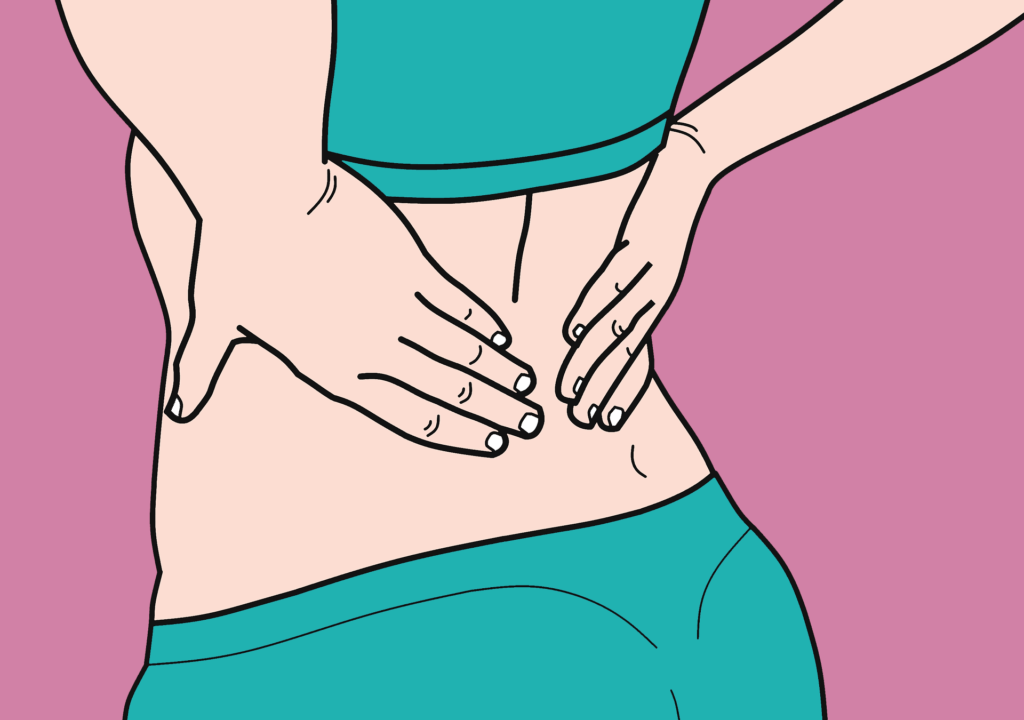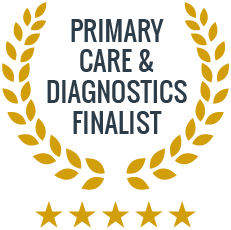Of the 33 vertebrae that compose the spine, it seems that the last 14 are the source of the most discomfort. Low back pain is incredibly common. It affects all age groups, although is worse in those over 50, and affects more women than men. Back pain affects 10 million Brits every day, with low back pain being accountable for 11% of the country’s total disability. Around 10,000 adults have elective spinal surgery in the UK every year, and it is the number one cause of disability worldwide.
What causes back pain?
This is the million-dollar question, because although back pain does have many known causes, in some cases it can recur without an obvious cause. Some of the more common causes include injury, herniated discs, osteoarthritis, and emotional/psychological trauma.
Injury
The most common cause of back pain is damage to muscles or ligaments. This usually takes the form of a sprain, which is among the least serious causes of back pain but can be excruciatingly painful and immobilising. A sprain occurs when a muscle is stretched beyond its natural capability, resulting in a tear. It can also happen to a ligament, the connective tissue that holds bones and joints together.
While minor sprains and soft tissue injuries usually do heal and resolve, in the short term, the pain can be very intense. In more serious cases, mechanical issues and injuries may affect the intervertebral discs, spinal joint mobility, and nerve roots, leading to chronic back pain.
Herniated Discs
A herniated lumbar disc will cause chronic low back pain (pain that goes on for more than three months). This is another extremely common cause of sciatica (another term for low back pain). It happens when the flat discs between the vertebrae, which are filled with a jelly-like substance that absorbs any shocks to the spine, change shape. The jelly material begins to push on the disc’s outer ring, causing it to bulge out. This may cause pressure on a nearby nerve root.
Sprains, minor injuries to the back muscles, and herniated discs are caused by:
- improper posture when lifting heavy objects
- moving suddenly in a way that stresses the low back (twisting or falling)
- long-term postural issues or repetitive movements
- sports injuries
- ageing – the vertebral discs naturally degenerate with age
- sedentary lifestyle (more on this in a moment)
Osteoarthritis
Otherwise known as arthritis of the spine or spondylosis, osteoarthritis typically occurs with age. It is a progressive condition, resulting from the natural degeneration of the vertebral discs and joints due to wear and tear. In addition to pain, osteoarthritis also causes inflammation and stenosis (a narrowing of the spinal canal).
Emotional/Psychological Trauma
In addition to the back pain that is caused by physical trauma, psychological and emotional trauma can also leave you flat out. Significant or traumatic events may be expressed as back pain due to the body’s need to communicate what has not been processed or expressed verbally. This can, of course, work both ways. The uncertainty and immobility caused by chronic back pain can have an emotional toll, which may require its own management.
Diagnosis for Back Pain
Whether your back pain is acute (short-term, has come on suddenly and recently), or chronic (has continued and recurred for three months or more), getting examined by a GP can provide reassurance and relief. Whether or not further investigation, such as a blood test, x-ray, or scan, is warranted, the doctor will be able to rule out serious diseases and recommend treatments or therapies that can help you recover.
Back pain can be caused by life-threatening conditions, such as blood infections, cancerous tumours located near the spine, or abdominal aneurysms. Such conditions are rare, but they are a good reason not to delay a visit to the doctor when you are in pain. It is essential to rule out serious diseases, especially since the more severe the underlying cause, the more minor the pain may be. In other words, your back does not have to be in intense pain in order to warrant a visit the doctor. A new, low-level, ongoing pain in your lower back should definitely be checked out.
Treatment for Back Pain
Depending on the nature and cause of your back pain, a number of treatment options are available, and the doctor can discuss which of these is most appropriate for you.
Medication – in the short-term, medication can help when the pain is intense.
Supplementation – a short supply of vitamins and minerals (especially Vitamin D) can cause long-term problems, and the doctor may recommend supplementation as part of your rehabilitation program.
Physiotherapy – rehabilitation for injuries and postural focus can help alleviate back pain.
Yoga – this central tenet of this ancient movement practice is the health and flexibility of the spine.
Swimming – this is a great exercise for pain as it allows you to move without adding stress to the joints with weight-bearing.
Pilates – strengthening your core muscles can take stress off the back and improve posture.
Other physical activity – too much sitting down, or worse, sitting down with poor posture, can create back problems. If you work at a desk or spend a lot of time sitting down for work, be sure to take regular breaks every hour, even just to stand up and stretch. Walk instead of taking the bus, take the stairs instead of the lift. Mobility is a key aspect of a healthy spine.
Other therapies – osteopathy, acupuncture, and massage can all improve circulation and promote healing around injuries, soothe tight muscles, and reduce physical tension. Psychotherapy and other therapeutic modalities that work on emotional stress and psychological trauma are also recommended where the pain does not have an obvious physical cause.
Keeping Your Spine Healthy
In the absence of injury, here are some golden rules to follow when it comes to maintaining the health of your spine.
- Stay active
An active lifestyle is the number one preventative measure when it comes to taking care of your spine. Maintaining the strength of your core muscles through exercise adds support for your back muscles and improves posture, so consider including yoga, pilates, or ab work in your regimen. If your exercise routine involves a lot of muscle strengthening, be sure to take plenty of time for stretching.
- Stand up, sit down
If your job involves prolonged hours at a desk, be sure to take standing breaks regularly, at least once every hour. Even just standing up, taking a deep breath, and walking around your desk, gets the blood moving through your pelvis and loosens your back muscles. When you’re sitting down, draw your shoulder blades together to open your chest, make sure that your weight is predominantly on your sitting bones and tuck your chin slightly to elongate the back of your neck. For optimal spinal support, keep both feet planted on the floor.
- Eat well
A varied diet, with plenty of fruits and vegetables and low in saturated fats is a good way to ensure that your body has the vitamins and minerals it needs in order to function optimally.
- Sleep right
If you are waking up with back pain, it might be time for a new bed. Make sure your mattress is giving you proper support – too soft and your spine will buckle as you sleep, too firm and it will add tension.
- Feel your feelings
Being present with your emotions, being patient with the difficulties, and being honest with yourself emotionally all have a positive impact on how your body feels. Regular self-care, bodywork, and therapy can help you maintain emotional balance and flow, which are the backbone of physical wellbeing.

















